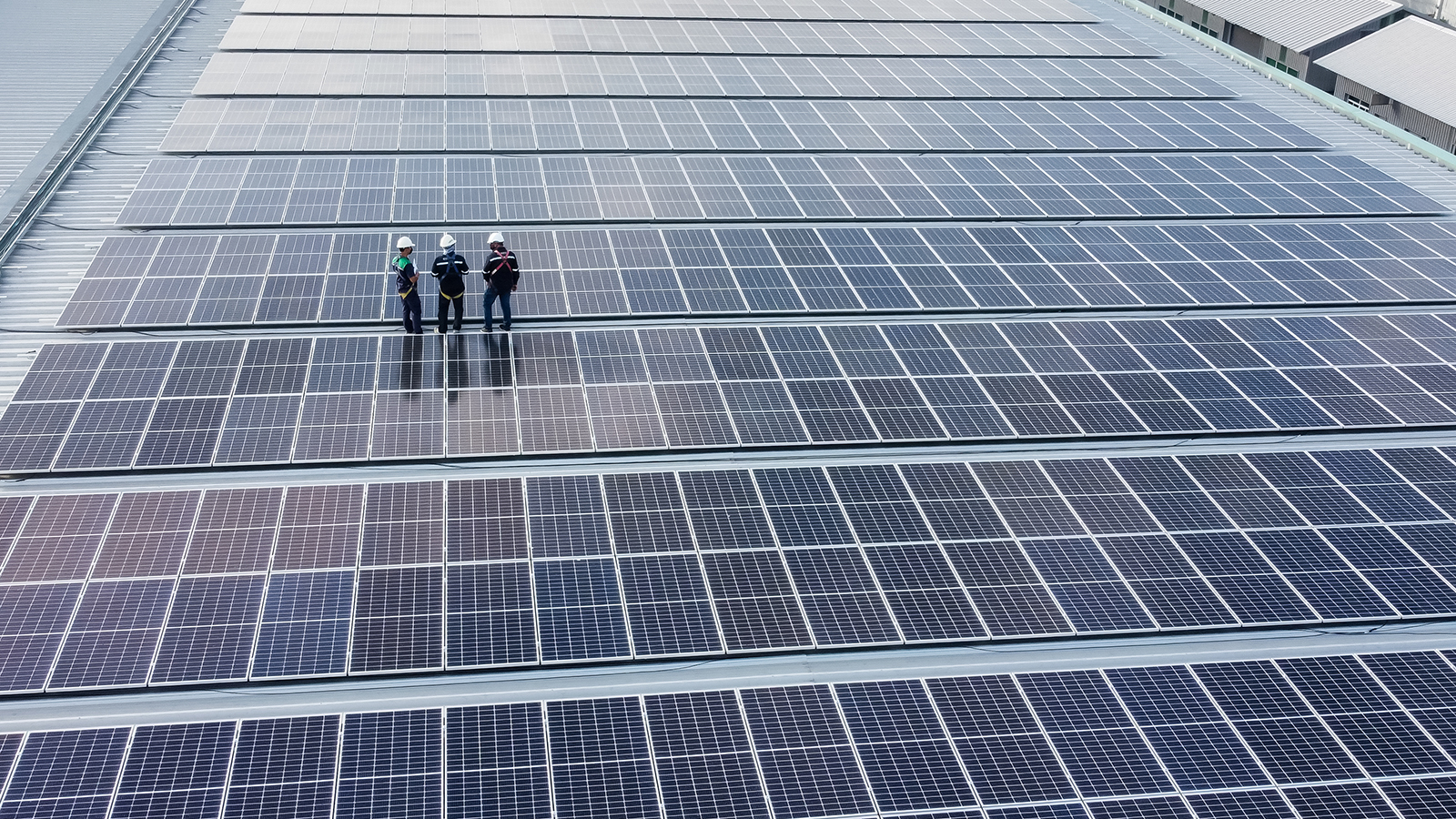
Tell FedEx to go solar on its warehouses
Shipping leader's warehouses have 2,000+ acres of rooftop, perfect place for solar.
Sign the petition
How much electricity could we create if we put solar panels on all of the warehouse roofs in the U.S.? Enough to power almost 20 million homes.
It’s one of the reasons some news outlets said putting solar on warehouses is a “no-brainer”. After all, as America works to transition from dirty and dangerous sources of energy to clean, renewable power, it’s hard to imagine a better place to put solar panels than the big, vacant sun-kissed roofs of warehouses.
Solar power brings society many benefits including cleaner air, less pollution and a more efficient, reliable and resilient electric grid. Putting solar panels on warehouses and other existing built infrastructure has the added benefit of protecting undeveloped land for renewable energy projects and often puts the electricity generation right where it is needed.
The potential for building solar infrastructure on warehouses is incredible, but getting warehouse owners and operators to consider it and then commit to doing it, is not going to happen on its own. We need to show how it can be done.
Among FedEx’s 5,000 facilities are 10 large U.S. sorting & handling facilities with more than 10 million combined square feet of space and 680 FedEx Ground facilities with a combined area of more than 112 million square feet.
Despite FedEx having millions of square feet of rooftop solar space, our research partners at Frontier Group were unable to find a public statement by the shipping giant committing to specific solar goals.
So we’re asking FedEx, what its rooftop solar plan is. And if it doesn’t have one, we have some ideas for what it should do.
If FedEx installed solar panels on all its facilities, it could harness a lot of energy from the sun and turn it into electricity to power its buildings and potentially its growing fleet of electric vehicles. After all, FedEx plans to convert its parcel pickup and delivery fleet to electric vehicles by 2040. What if the electricity to power those trucks came from the sun?
Fed Ex is one of the most recognizable brands for American consumers. By making a rooftop solar commitment, FedEx could start to shift the warehouse and shipping industry, creating momentum for warehouse owners to recognize that their roofs are more valuable with solar on them.
If FedEx commits to install solar panels on its facilities, it could also help drive down the costs of solar equipment and installation, making it easier for other companies that own and operate warehouses to follow suit.
FedEx pioneered overnight delivery services, in many ways paving the way for our current age of “next day delivery” of everything. The energy required, and the environmental impact of all of that overnight shipping, is immense.
Given its goal of carbon neutrality by 2040, FedEx needs to seize every opportunity to reduce its carbon footprint, including committing to and installing on-site renewable energy generators.
And we have a pretty good blueprint they can follow. Prologis, a large logistics company, already has 217 MW of installed solar capacity. That’s enough clean electricity to power more than 30,000 average American homes, and the company plans to more than triple that amount of rooftop solar by 2025.
That’s why we are calling on FedEx to publicly commit to a goal of installing solar on all viable warehouse roofs and parking lots by 2035, and require or incentivize companies they do business with to make rooftop solar commitments as well.
You can join the campaign and urge FedEx to go solar. We’ll deliver your petition to FedEx on your behalf.
Senior Director, Campaign for 100% Renewable Energy, Environment America Research & Policy Center
Johanna directs strategy and staff for Environment America's energy campaigns at the local, state and national level. In her prior positions, she led the campaign to ban smoking in all Maryland workplaces, helped stop the construction of a new nuclear reactor on the shores of the Chesapeake Bay and helped build the support necessary to pass the EmPOWER Maryland Act, which set a goal of reducing the state’s per capita electricity use by 15 percent. She also currently serves on the board of Community Action Works. Johanna lives in Amherst, Massachusetts, with her family, where she enjoys growing dahlias, biking and the occasional game of goaltimate.
